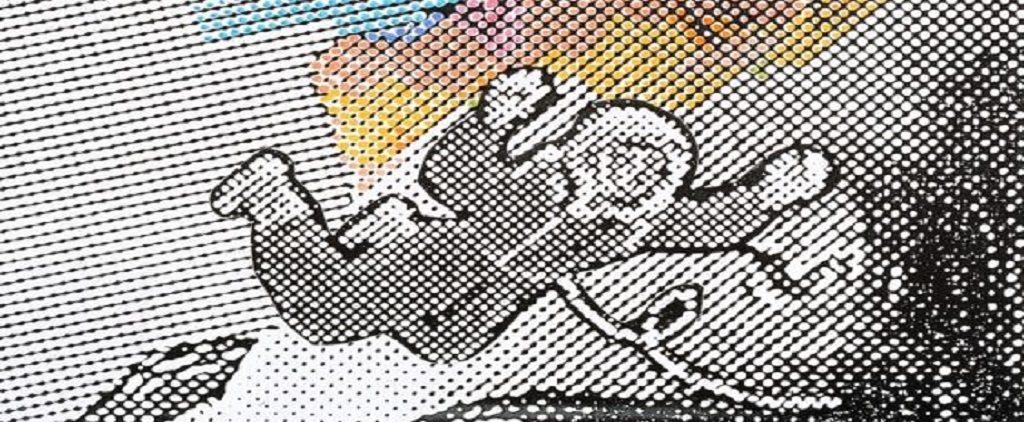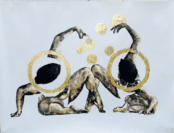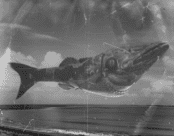[dropcap style=”font-size:100px;color:#992211;”]T[/dropcap]he earthly heavens and hells which we are rewarded with or condemned to according to our birth rite, or chance, depending on your point of view…
While religions offer concepts of ideal states such as heaven these are often otherworldly and abstract the idea of a Utopia is already an attempt to transfer a set of ideals into reality changing it in an immediate way. I think this is relevant to artists who deal with perception and transformation often moving between abstract and concrete when conceiving and making work.
The concept of Utopia, that is the creation of an ideal society where all social and economic problems have been resolved was explored in Plato’s ‘Republic’ Plato conceived of a society ruled over by good natured philosopher kings and he saw this as an answer to the corruption of politicians and despots as well as a way to guide the unpredictable masses,
“One of the penalties for refusing to participate in politics is that you end up being governed by your inferiors,” Plato
The term ‘Utopia’ was coined much later however by Sir Thomas More from the Latin, he wrote of a perfect island society in his work ‘Utopia’ the word meaning the good place that is no place,
“I have plenty of machinery around me; what I really need is a more enchanting world in which to live and work.” More
More’s take on Utopia is subtle in this text he clearly satirises the corruption of Europe and seems to imply that the ideal society may be an unreachable endeavour. Despite this many of the ideas that More posited; female priests, gridded cities, a welfare state and euthanasia have come to pass and represent the ability of a society to radically change albeit over a long period of time.
This potential for change is what makes ‘Utopias’ so useful as models for transformation and ideas which offer hope and inspiration to those who will be needed to make the changes concrete.

Karl Marx’s statue stands at Teatralnaya Square, Moscow
Marx for example is considered Utopian since he wanted to remodel society so there would be no divisions such as rich and poor he proposed an end to private property (a concept also present in More’s work) and to capitalism in his work ‘Das Capital’ and the ‘Communist Manifesto’ While these ideas inspired many progressive changes such as increased rights for the poor, collective action and equality for woman and ethnic minorities they also inspired Stalin’s soviet Russia which is largely seen as a failed Utopia where life became restrictive and people were treated as cattle under a repressive regime.
This brings us to the idea of a Dystopia while Stalin’s version of Marx’s ideas represents a failed Utopia we can also identify visions that for many were dystopic from the beginning such as the Nazi Thousand year Reich, Hitler’s ideas were Utopian for him and those he valued while the rest of us can clearly see the horror of the world he wanted.
It’s clear then that Utopia’s even failed ones are better when they don’t exclude certain races or creeds, instead offering a more universal idea which might fail better.
The Astronaut
The figure of the Astronaut is inspirational to children and adults they are modern heroes risking their lives in the pursuit of knowledge and the exercise of curiosity,
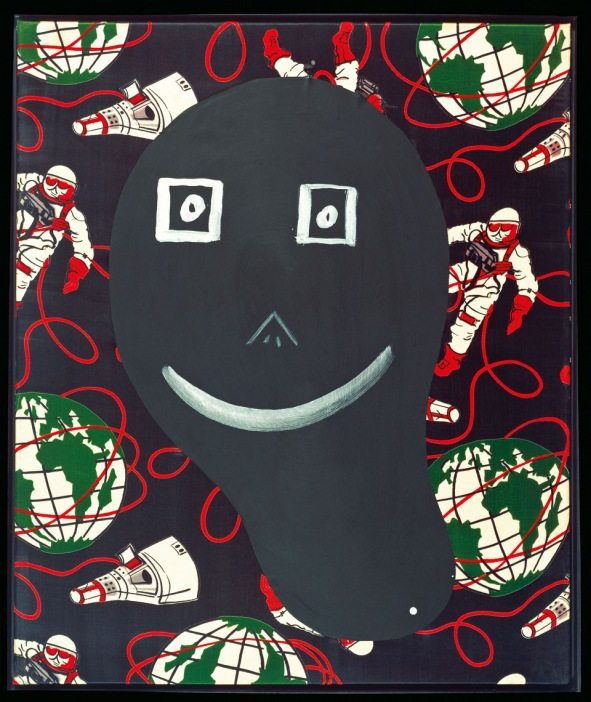
Sigmar Polke Polke as Astronaut 1968
A convincing modern utopian gesture is the international effort to explore space this effort is not only shared by societies otherwise in conflict (Russia and America) but it also posits a shared challenge and goal that humanity might set itself to discover and probe into the unknown. The Voyager mission is strong example of this utopian vision, below Carl Sagan who was involved the Voyager mission, one of his responsibilities was to brief astronauts, speaks of the famous ‘Pale Blue Dot’ photograph set back from probe,
“On it, everyone you ever heard of…The aggregate of all our joys and sufferings, thousands of confident religions, ideologies and economic doctrines, every hunter and forager, every hero and coward, every creator and destroyer of civilizations, every king and peasant, every young couple in love, every hopeful child, every mother and father, every inventor and explorer, every teacher of morals, every corrupt politician, every superstar, every supreme leader, every saint and sinner in the history of our species, lived there on a mote of dust, suspended in a sunbeam…Think of the rivers of blood spilled by all those generals and emperors so that in glory and triumph they could become the momentary masters of a fraction of a dot.”Carl Sagan, Cornell lecture in 1994
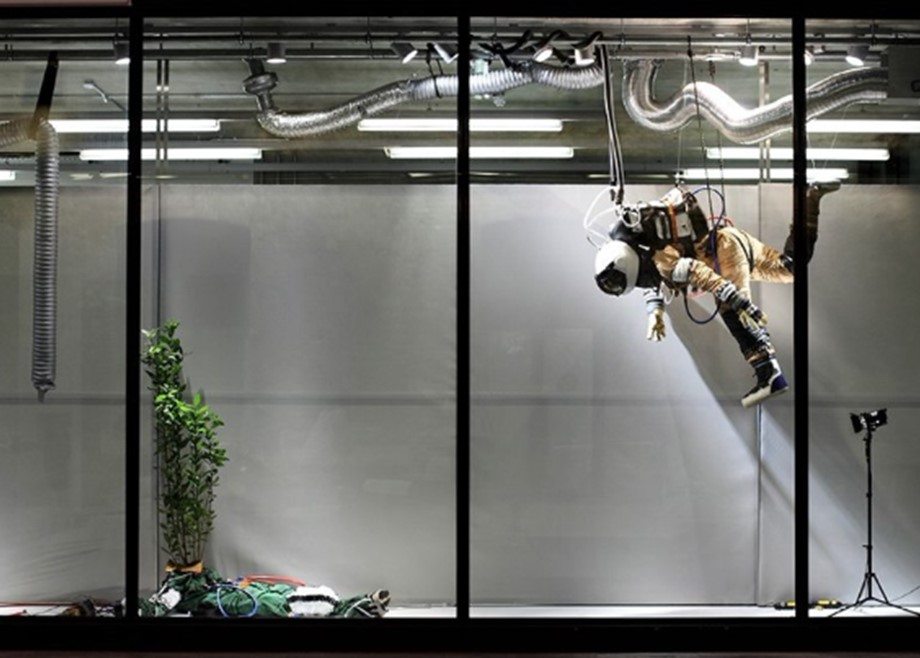
‘Things Being What I Want Them To Be And Not What They’re Supposed To Be’ Sarah Fortais, 2013, Photo credit to Josh Jones
This kind of attitude is hopeful and it calls upon science which seems to have insurmountable authority in our time as a tool for humans the technology, space rockets and probes have become synonymous with human struggle and curiosity, the Voyager 1 probe sent into space in 1977 is currently the farthest space craft from earth extending the reach of humans far from the confines of our pale blue dot,
“We learned a lot about the Moon, but what we really learned was about Earth. It is my belief that when creativity is pressed to its limits it renders its ingredients unrecognizable; pressed even further it comes back around to render a more legible construction of what was always in full view. This process, identified by Viktor Shklovsky as defamiliarization, has a transformative power that rests not in its ability to change a subject but rather, the perception of it,” Apollo astronaut Jim Lovell,
Lovell’s statement echo’s Sagan’s suggesting that pursuing the goal of exploration and discovery might help us to escape perceptions which keep us mired in our earthly problems, there is no justification of greed or power for its own sake in either vision both statements make that embedded position (metaphorically in terms of perception and literally on Earth) seem more animal than human, shameful and small minded, it is after all animals which are hopelessly embedded in their environments and subject to their instincts even when these are detrimental, for people this embeddedness has a more fatal and tragic element since we should know better..,
The Minotaur

‘Minotauromachie’ Picasso 1935
A bestial male figure at the centre of a labyrinth, every seven years seven of the strongest and fairest young men and woman were sent as tribute to the king of Crete and were killed by the monster.
The minotaur is a creature of appetites and instincts filled with rage his presence under the palace is a disturbing flip side of the power, pomp and ceremony of the king and his attendants in the palace, literally the ‘unconscious’ (Freudian) of power, (in some accounts the beast is a deformed prince the son of the king and brother to Ariadne who helps the hero who will kill him) he stands for ignorance violence, death and a waste of potential, he is both a monster and a victim of a depressing context, he has as little agency as the young people he kills.

Minotaur bust, (National Archaeological Museum of Athens)
There are forces that take advantage of ignorance which arrest individuals in a more repetitive and seemingly animal traps, such forces co-create along with the individuals themselves, modern Minotaur’s. In our time these are best described as modern forms of propaganda those that wield these tools do so to play on hopelessness, confusion, fear and hate to make things easier to predict and control but like the Minotaur they also snare themselves in the continuing power play wasting their lives in pursuit of becoming Sagan’s depressing ‘momentary masters of a fraction of a dot.’ A recent BBC documentary ‘Hyper Normalisation’ attempts to tackle these new strategies to offer us some purchase on reality,
http://www.bbc.co.uk/iplayer/episode/p04b183c/adam-curtis-hypernormalisation
“…politicians, financiers and technological utopians, rather than face up to the real complexities of the world, retreated. Instead, they constructed a simpler version of the world, in order to hang on to power.” Adam Curtis

John Tomlinson as The Minotaur, ‘The Minotaur’, Royal Opera House, London
We are all familiar with propaganda in its early 20th century forms but while we feel we are immune to those the strategies continuously develop to make use of technology and respond to changing fashions. The journalist and political commentator Adam Curtis explains some of the less obvious of these; Constructive ambiguity, this is the rebranded official term for misleading your so called allies in a way which avoids actually lying so as not to suffer attacks from public opinion when the situation is made public, in this way there is no truth to reveal or discover simply different interpretations of one’s intensions and an acceptable level of deniability, this is an attempt to defeat journalism. Curtis explains that the master of this strategy and the inventor of the term was Henry Kissinger who employed it too great effect in Syria to undermine the Arab regions attempts at greater union.
The Labyrinth
Designed by the master architect to be a prison for the Minotaur and place of confusion for the young, containing and directing the energy of both the predator and the prey.

Mark Wallinger, ‘Labyrinth’ 2014
What is the Labyrinth made of now? Journalist Adam Curtis has emphasised the following,
Perception management, Here the government/propagandist leads the media narrative of a certain person or event (the examples given are colonel Gadaffi and fake UFO evidence originating from the CIA) These people/events serve to distract or simplify a situation so as to manage the public’s attitude towards the actions of the propagandist at a certain time, Gadaffi for example was largely an exaggerated force according to Curtis (Curtis is clear that Gadaffi played in to this role) he served as a kind of pantomime villain who provided a suitable and predictable foil to the heroic western forces when he was no longer needed as an enemy he was ‘re-branded’ as an ally, then back again just before his death.
Oh dearism, this is a broad attitude induced by the style of journalism and media news which once provided explanations but has over the last 50yrs. Curtis claims that the news and media portrays a chaotic and violent world in order to make the news a kind of entertainment where everything is shifting and all the traditional forms of agency, activism, politics education are undermined the effects of this are to cause people to retreat into simple narratives and to elect not to do anything about their problems on a more local level instead they think, oh dear.
Non-linier war, This Curtis claims is a form of proxy-war where the point is not to win but to sustain the conflict and keep your own side in fear and confusion so they become more and more dependent on the existing power structures, the example given is Russia’s strategy in Ukraine and the way the conflict has helped to create a kind of confusing theatre where no really knows what’s going on or who the enemy really is.

Ariadne and Theseus, Niccolo Bambini (1651-1736)
While it may seem an over simplification to say these strategies are evil they are certainly more dystopic and they are all obstacles to the perception which Sagan and Lovell describe, while these things are widely practiced by powerful institutions and governments the architecture of the labyrinth is well in place and we are lacking Ariadne’s thread to help us find a way out.

Natalie Andrews is an artist working with a range of mediums, she has shown her work at the Hoxton Arches in London and is currently working on a number of 3d works alongside painting exploring the links between painting and sculpture;
“I am interested in the way that we relate to one another and with space, how the environments we inhabit structure and dictate these relationships and create both opportunities for emancipation but also the deep alienation and separateness.”

